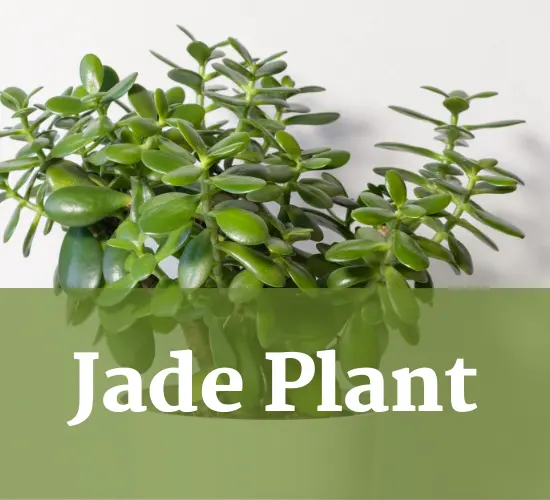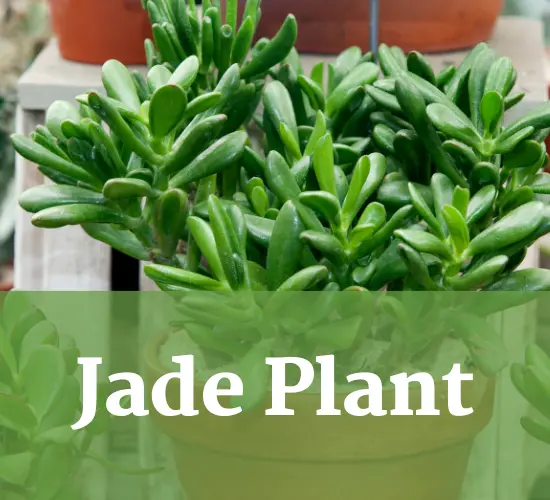Table of Contents
Why Is My Jade Plant Losing Leaves
Jade plants(Crassula Ovata) those beloved succulents with their thick, luscious leaves, are known for their resilience and ability to thrive in a variety of conditions. However, even the hardiest of plants can sometimes experience issues, and one common problem that jade plant owners may encounter is leaf drop. The sight of those beautiful leaves falling to the ground can be disheartening, but fear not! In this article, we will delve into the various causes of jade leaf drop and explore the troubleshooting techniques that can help you bring your plant back to its flourishing state.
Leaf drop in jade plants can be attributed to a multitude of factors, with overwatering and underwatering being the primary culprits. While it may seem counterintuitive, both of these extremes in watering can have detrimental effects on your jade plant. Overwatering can lead to root rot and suffocation, causing the leaves to turn yellow and eventually drop off. On the other hand, underwatering can result in dehydration and nutrient deficiency, causing the leaves to wither and fall prematurely.
By understanding the delicate balance of water requirements, you can prevent these issues and provide your jade plant with the optimal moisture levels it needs to thrive. So, let’s embark on this troubleshooting journey and explore the world of jade leaf drops, giving your plant the freedom to flourish once again.
Key Takeaways

- Jade leaf drop can be caused by overwatering, underwatering, or infestation by pests like mealybugs or scale insects.
- Overwatering leads to root rot and suffocation, resulting in yellowing and the dropping of leaves.
- Underwatering causes dehydration and nutrient deficiency, causing leaves to wither and fall prematurely.
- Treating leaf drops involves identifying and addressing nutrient deficiencies and providing balanced fertilizer to promote healthy leaf growth.
Causes of Leaf Drop
Leaf drops in jade plants can be attributed to various causes, such as overwatering, underwatering, or infestation by pests like mealybugs or scale insects.
Overwatering is a common cause of leaf drop in jade plants. When the soil is constantly wet, it can lead to root rot, which in turn affects the overall health of the plant. To prevent overwatering, it is important to water the jade plant only when the soil is completely dry. Additionally, watering should be done slowly and deeply until water trickles out of the drainage hole. Any excess water in the saucer should be promptly removed to prevent the roots from sitting in standing water.
On the other hand, underwatering can also cause leaf drops in jade plants. When the plant does not receive enough water, it becomes stressed, leading to the shedding of leaves. To prevent underwatering, it is important to water the jade plant deeply until water trickles out of the drainage hole. Regularly checking the soil can help prevent it from becoming bone-dry for too long.
Leaf drops in jade plants can also be caused by infestation from pests like mealybugs or scale insects. These pests feed on the sap of the plant, weakening it and causing leaves to drop. Signs of infestation include sticky leaves and mold growth. If pests are discovered, it is important to quarantine and treat the plant immediately to prevent further damage.
Treating leaf drops in jade plants also involves identifying and addressing any nutrient deficiencies. Nutrient deficiencies can cause weakened and discolored leaves, leading to leaf drop. Providing the plant with a balanced fertilizer can help address these deficiencies and promote healthy leaf growth.
Preventing Overwatering

To prevent excessive moisture in the soil, it is recommended to water jade plants only when the soil is completely dry and to ensure that any excess water is promptly removed from the saucer.
Proper watering is crucial in maintaining the health of jade plants and preventing overwatering. Here are three key steps to follow for proper watering:
- Water only when the soil is 100% dry: Jade plants are native to arid regions and are adapted to survive in dry conditions. Overwatering can lead to root rot and ultimately cause leaf drop. To avoid this, check the moisture level of the soil by inserting your finger about an inch deep. If the soil feels dry, it’s time to water.
- Water slowly and deeply until water trickles out of the drainage hole: When watering jade plants, it’s important to give them a thorough watering. This helps to ensure that the water reaches the roots and encourages healthy growth. Water the plant slowly and evenly, allowing the water to soak into the soil. Stop watering when you see water trickling out of the drainage hole at the bottom of the pot.
- Remove excess water from the saucer: After watering, it’s essential to remove any excess water that may have accumulated in the saucer. Allowing the plant to sit in water can lead to root rot and other issues. Use a towel or sponge to soak up the excess water, ensuring that the plant is not left in standing water.
By following these proper watering techniques, you can help prevent overwatering and promote the overall health and vitality of your jade plant. It’s important to be aware of the signs of overwatering, such as yellowing leaves, soft and mushy stems, and a foul smell. Adjust your watering schedule accordingly to ensure your jade plant thrives.
Dealing with Pests
Pest problems can pose a persistent predicament for jade plant owners, potentially leading to a plethora of plant predicaments.
Two common pests to watch out for on jade plants are mealybugs and scale insects. Mealybugs are small, soft-bodied insects that can be identified by their white, cotton-like appearance. They often gather in groups on the stems and leaves of plants, sucking out sap and causing damage.
Scale insects, on the other hand, are small, oval-shaped pests that attach themselves to the plant and feed on its sap. They can be identified by their hard, shell-like covering.
When dealing with pest problems on jade plants, it is important to act promptly to prevent further damage.
One option is to use natural remedies to control the pests. For mealybugs, a mixture of water and dish soap can be sprayed onto the affected areas to suffocate the pests. For scale insects, rubbing alcohol can be applied to a cotton swab and used to wipe off the pests.
Another option is to seek professional pest control assistance. Pest control experts have access to a range of products and techniques to effectively eliminate pests from jade plants. They can provide targeted treatments to eradicate the pests and prevent them from returning.
It is important to carefully follow the instructions provided by the professional and to continue monitoring the plant for any signs of re-infestation.
Frequently Asked Questions
How often should I fertilize my jade plant?
The fertilizing frequency for jade plants depends on their nutrient requirements. Generally, it is recommended to fertilize jade plants every 4-6 months during the growing season. Use a balanced, water-soluble fertilizer and follow the instructions for application.
Can I propagate my jade plant from the fallen leaves?
Leaf propagation is a common method for propagating jade plants. By using fallen leaves, new plants can be grown. This technique offers benefits such as increased plant numbers, genetic diversity, and the ability to create new plants with desirable traits.
How do I know if my jade plant is getting enough sunlight?
Signs of sunlight deficiency in jade plants include pale or yellowing leaves, leggy growth, and reduced leaf size. To provide adequate sunlight, place the plant near a south- or west-facing window for at least 4 hours of sunlight daily.
What temperature is ideal for a jade plant?
The ideal temperature for jade plants varies depending on the time of year. During the growing season, temperatures between 65-75°F (18-24°C) are best. In winter, they can tolerate cooler temperatures around 50-55°F (10-13°C).
Can I prune my jade plant to prevent leaf drop?
Pruning techniques can be employed to prevent leaf drop in jade plants. Regular pruning promotes healthy growth, removes diseased or damaged leaves, and encourages branching. Proper technique involves sterilizing tools, making clean cuts, and avoiding excessive pruning to maintain plant vigor.